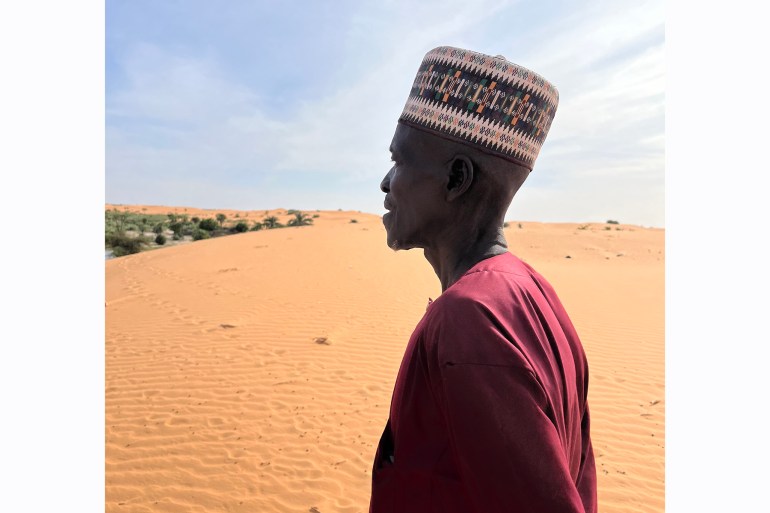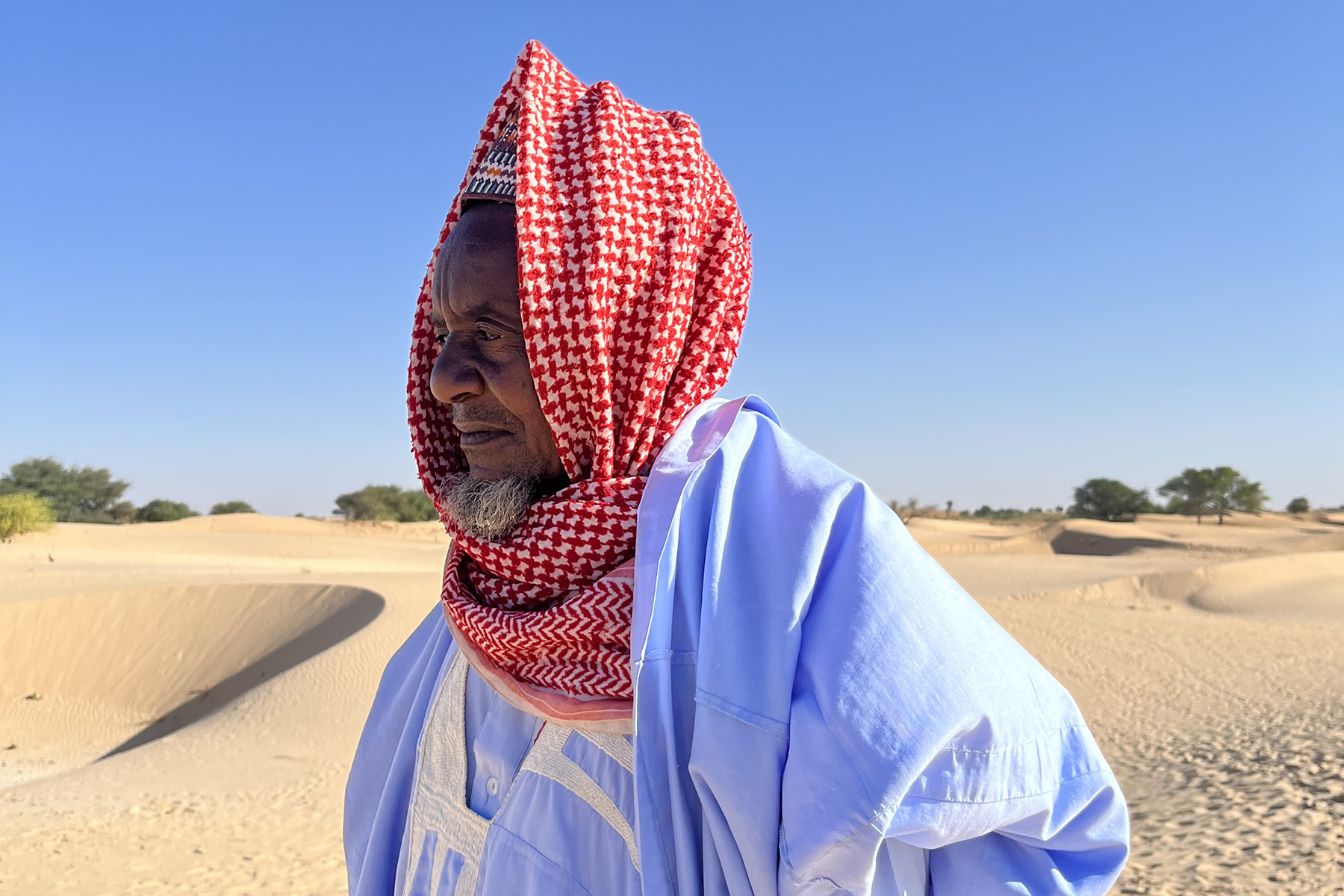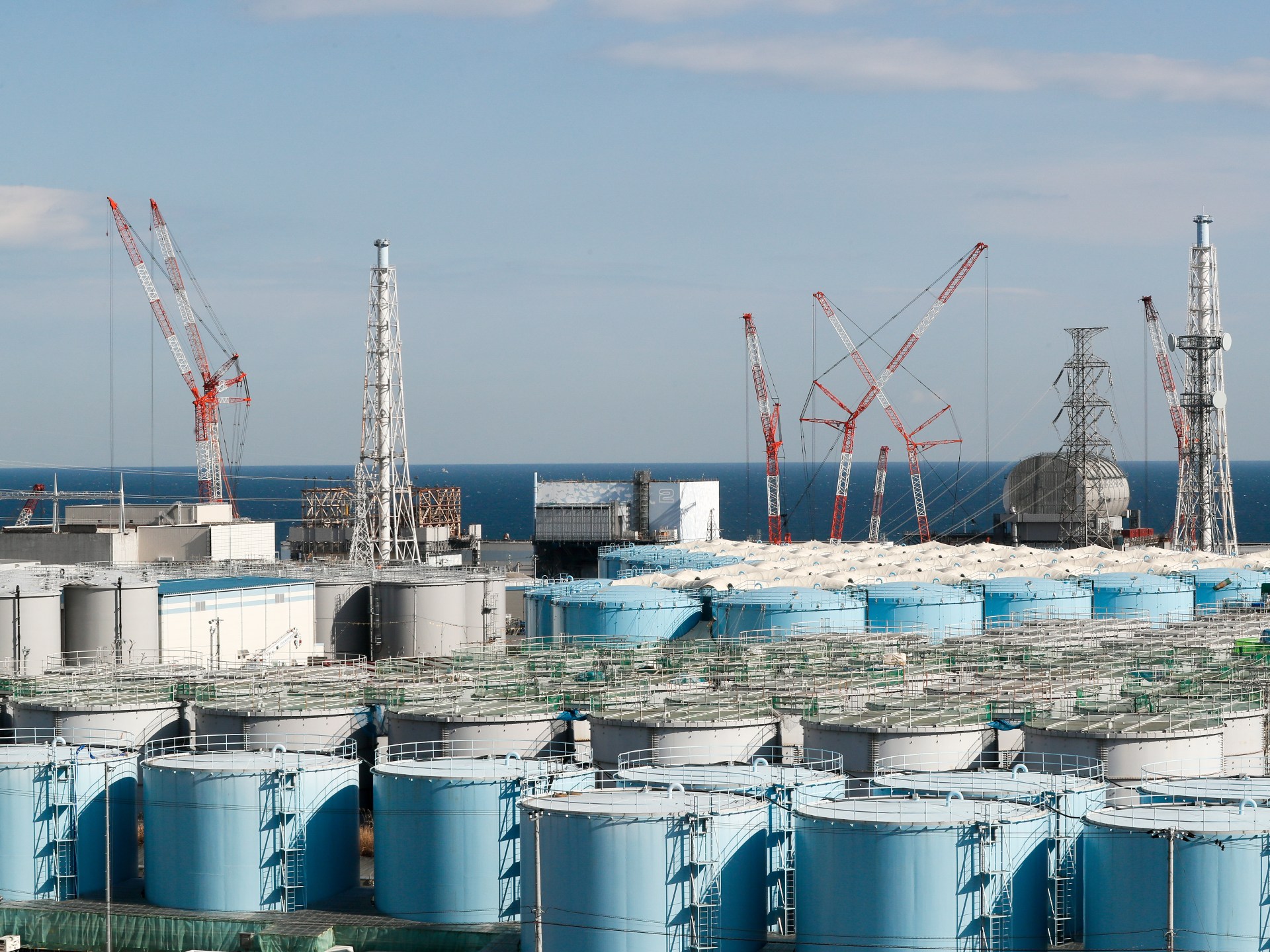Desert swallows livelihoods as climate shocks continue in northeast Nigeria | Environment
Toshia, Yobe – In a remote corner of Nigeria’s northeastern state of Yobe, lie communities surrounded by vast sand dunes stretching as far as the eye can see. In recent years, the desert has been coming closer to these communities, a development that continues to affect the lives of people there.
Toshia town in Yunusari local government area, close to the border with Niger, is one such community. Rides to the town involve old, crowded four-wheel drive vehicles, with passengers squeezed into every available space – including the rooftop, bouncing around as the vehicle navigates the soft sand.
Bulama Mele was only a child when desert encroachment compelled his parents to start farming in Niger. Now a 40-year-old father of eight children, he says the desert is enclosing the town from every direction. He now endures the tough commute to run his farm in Niger, after losing the two farms he had in Toshia, to the deserts.
Besides creating a challenging commute, the desert has also significantly affected the living conditions.
Others have also incurred heavy losses as the environmental crisis continues to deplete dozens of farms and trigger food shortages in those areas. As many as 10 farms belonging to the village head Maigari Isa Bukar, his brothers, and his father were lost to the encroaching desert.
And like his father, Bukar was also displaced from his home.
Al Jazeera spoke to other residents who said the sands have also buried more than 20 houses in recent years. Consequently, land has become scarce to the point that people are now returning to rebuild in areas that were abandoned.
Twenty years ago, Bukar said, his farm produced about 20 to 30 bags of beans, millet, groundnut, and sorghum. But presently, he has been unable to get up to a single bag because farming conditions have deteriorated. “Life has become more difficult for us because there is no food and we are hungry, nowhere to farm,” he told Al Jazeera.
Due to the shortage of grass, animals are no longer able to roam around and feed, livestock in the community are fed from the little forage the farmers can collect from the farm. Consequently, milk production by cattle and goats has decreased. Some of the animals have even died from starvation-related diseases.
![Dune in the surrounding area of Toshia town near the Nigeria - Niger Border. [Murtala Abdullahi]](https://www.aljazeera.com/wp-content/uploads/2024/01/IMG_0405-1704372712.jpg?w=770&resize=770%2C513)
‘A dangerous issue’
In the adjoining Yusufari local government area, life in Tulo-Tulo – also near the Niger border and on the fringes of the desert – life has changed for the residents.
“The impact of desert encroachment is more than what we are describing to you, we are just giving a snippet,” said 61-year-old Dauda Maigari, a millet, sorghum, and beans farmer. The changing climate have been restricting his family’s ability to farm and raise livestock and he has begun to worry about being able to care for his 18 children and two wives.
Maigari said the desert has swallowed about 16 farms, including his, and has been expanding into nearby areas. “For example, you see the wind is blowing in this direction, let’s say this building is the point this month. If we come back next year, you will see it has moved forward by 25 metres”.
The displacement of people and their livelihoods by the Sahara, is a “dangerous issue”, said Lawan Cheri, a lecturer in public administration at the Federal Polytechnic in Damaturu the state capital.
He explained that the desert is creeping into the Yobe at the rate of about 0.6 kilometres per annum (0.37 miles) which means that every three years, the desert extends at least by two kilometres (1.24 miles).
The desert encroachment has caused a drastic reduction in the number of trees available and contributed to rainfall shortage, experts have said.
“It is scientific … that the depletion of vegetation has affected rainfall patterns,” said Usman Ali Busuguma, regional director of the African Climate Change Research Centre (ACCREC) in Maiduguri, capital of neighbouring Borno State.
This significant reduction in the volume of rainfall has intensified the difficulties households face. Farmers have said although it rained a lot two years ago, the volumes have been dismal this year.
“Where we used to get water with ease before currently, it requires putting extra effort, that’s even groundwater, not rainwater,” said Maigari. The loose nature of the desert soil is also affecting the flow of water from boreholes especially when the iron pipes are not inserted quickly, he added.

‘Plant more trees’
Analysts have said causes of desert encroachment in the semi-arid region include massive deforestation associated with low-income households who use wood as the primary source of energy for cooking.
The population in Yobe has gone from 2.3 million people during Nigeria’s last census in 2006 to an estimated four million people today – a 42 percent increase. With that growth has come more demand for agricultural land and cooking fuels.
In May, Nigeria’s newly elected government removed a controversial fuel subsidy to reduce the strain on its purse as it looks to reform a dwindling economy. But in the short term, the move has translated to higher pump prices and costs of living for Nigerians.
The subsidy withdrawal has now made access to affordable cooking gas difficult for large sections of these communities and led to continued deforestation. But increased fuel prices have also devastated the adoption of irrigation farming in Tulo-Tulo.
The strain on the ecosystem has been exacerbated by rising temperatures due to global climate change, analysts said. Locals said higher temperatures has changed growth patterns of plants with strong roots that used to make it difficult for the topsoil to be blown away by the wind.
Now there have been calls to salvage the situation through reforestation.
“There must be a deliberate policy to plant more trees,” Cheri said, advocating for the adoption of agroforestry – planting trees with food crops – to protect farmlands.
A previous restoration effort in the 2000s by a government agency made a difference. “Several years back they brought trees, got a place and planted them. We have seen that this has helped,” Maigari said.
There have been other attempts.
In 2007, the African Union’s Great Green Wall initiative, conceived to address desertification in the Sahel region was launched. By 2014, it had begun in 11 states across northwest and northeast Nigeria where the southward expansion of the Sahara desert is in effect.
Five years later, an investigation by a Nigerian publication found that failed contracts and lack of community involvement in tree selections had jeopardised its implementation.
Cheri blamed corruption for its failure. ACCREC’s Busuguma was milder in his criticism, describing it as an “ambitious and commendable” project that has fallen short of expectations.
“Since its inception, the project has not prioritised community engagement, making it feel disconnected from the very communities it aims to serve,” he said.
Last year, the government embarked on another tree-planting exercise; the seedlings are being nurtured and a borehole was also installed at where the trees were planted to aid watering. There is renewed hope that, as more trees are planted in the area, it could pave the way for rainfall to return to the town’s parched farmlands.
Still, Mele wants more government assistance to alleviate their pain and rescue the town from the desert’s unyielding embrace.
“I can’t say this is what the government has done,” he says. “Without help, we will continue to suffer”.




